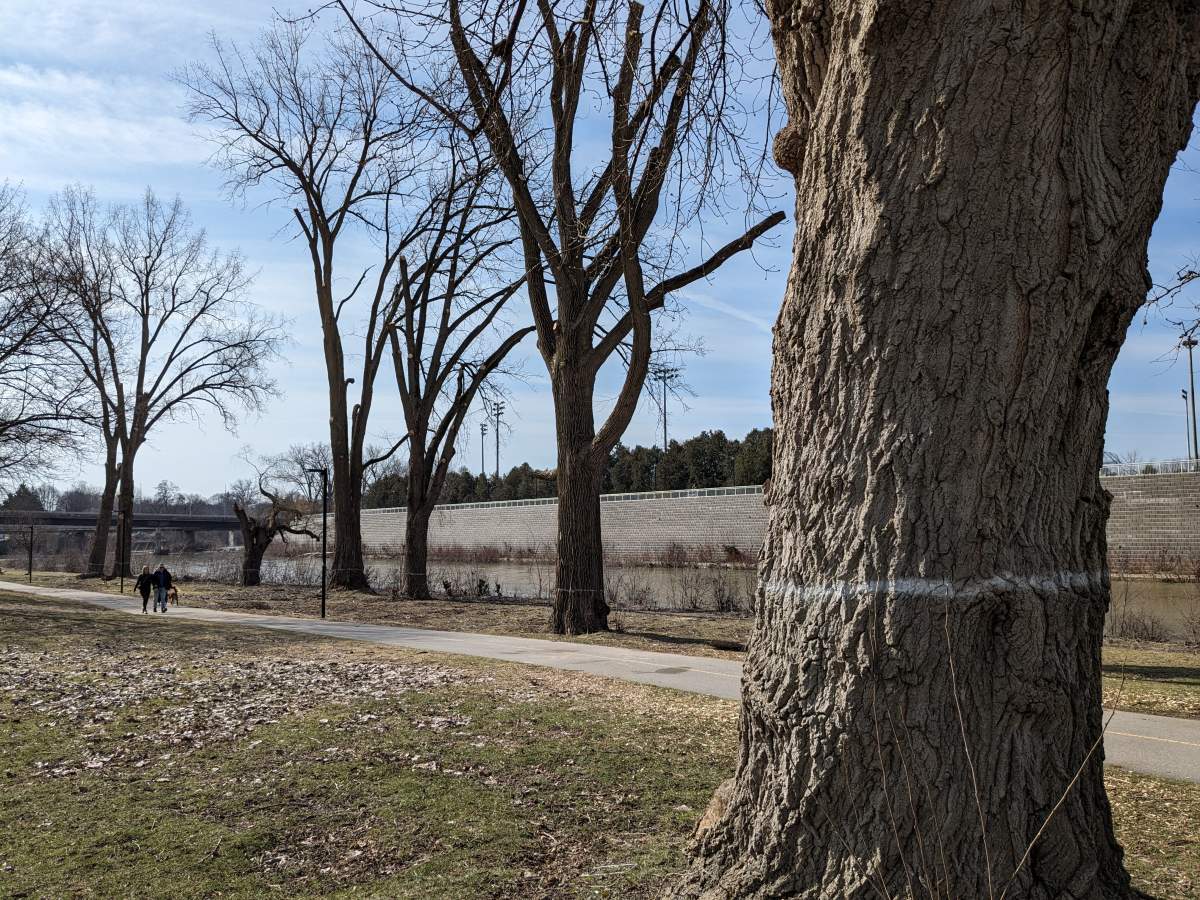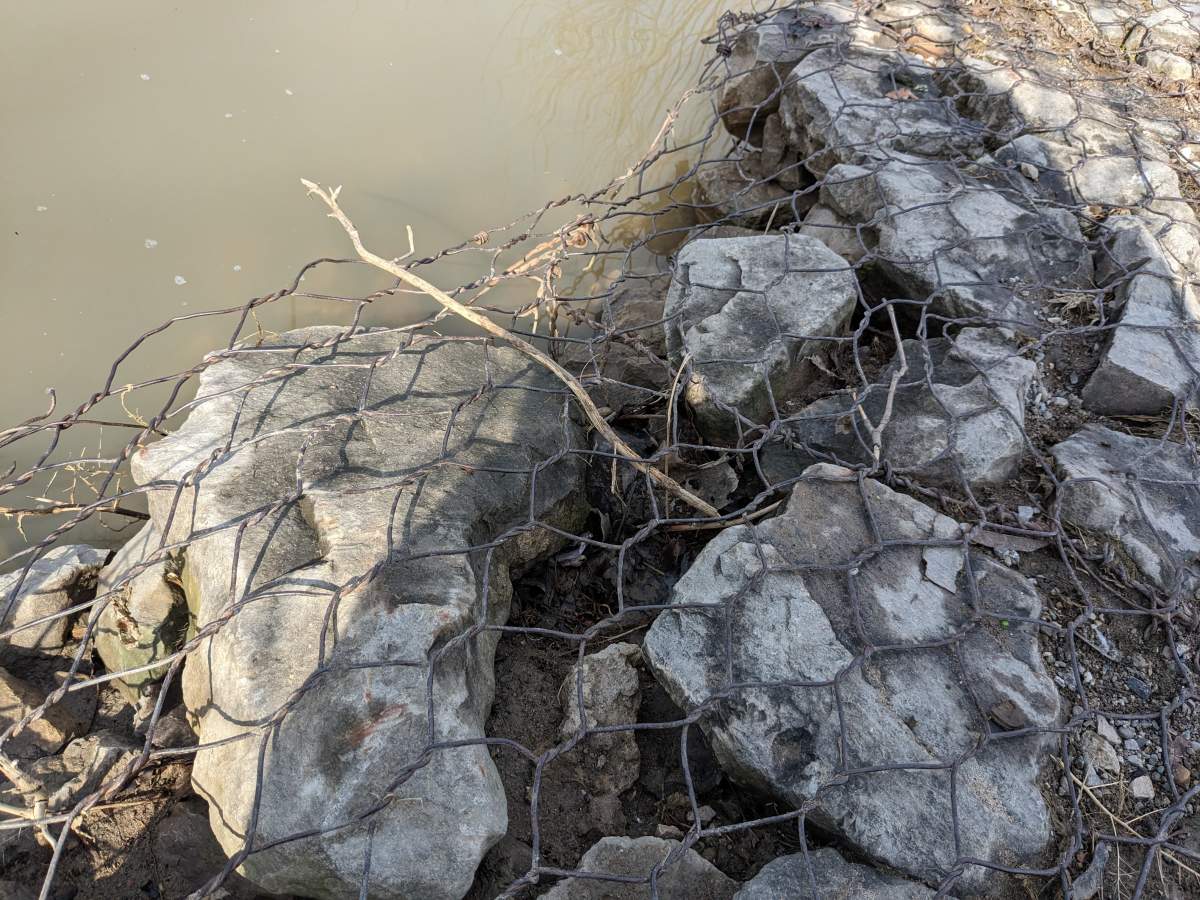A $2-million project aims to both upgrade aging Harris Park erosion prevention on the shoreline and build new park infrastructure, but will result in 25 trees being removed from the park.

The Harris Park Shoreline Restoration project will replace the more than 50-year-old erosion control structure on the east bank of the Thames River, move the Thames Valley Parkway (TVP) out of the floodway, and install new features like a boat launch, an outlook area, and fishing areas.
“The shoreline is eroding and the measures that we’ve had in place are reaching the end of their lifecycle, unfortunately, they’re failing,” says Paul Yeoman, London’s head of parks and forestry.
“It’s a pretty comprehensive rework that we’re doing for our efforts to mitigate impacts on the park and also for climate change.”

At least 25 trees in the park will have to be removed to make room for the construction, especially near the shoreline, where roots may intertwine with the erosion control structure.
“We’ve looked at a number of options to figure out from an engineering perspective what could be done to try to avoid this but the solution is unfortunately the one that we’ve landed on,” Yeoman said.
“As a result, there’s 25 trees that are going to be removed from the park, 27 that are being retained and we have plans to plant another 80 as we go forward.”
Nine of the trees marked for removal are cottonwoods, which grow fast and have a shorter lifespan compared to other trees. Yeoman says assessments by arborists highlighted several older cottonwoods reaching the end of their lifecycle.
While nearly four times as many trees will be planted as are taken out, Western student and climate activist Genevieve Langille says it’s a shame the trees are being removed.

Get daily National news
“I’ve grown up around these trees, they’ve been here for a long time,” the third-year philosophy student said.
“I know it seems like the issue is just insignificant because it’s just trees, but these trees are so old and it would take hundreds of years to have trees of the same growth level.”
Langille has been a climate activist for a long time, having been part of organized climate strikes in 2019 as a 16-year-old.
While she understands that some of the trees are either reaching the end of their life cycle or pose a potential risk due to damage or rot, she says many are still in good condition.
“Based on the arborist analysis, many are in fair or good condition, so it doesn’t actually make sense to cut them down except for the fact that they’re in way of the city’s plans,” she said.
“I don’t think a lot of the things that are in the plan are necessary, like a fishing dock or a boat launch. You can already launch your kayak or canoe into the water.”
Langille plans to organize a protest with other post-secondary students against the plan on March 24. Work has already begun ahead of the summer to remove many of the branches from the trees in Harris Park, ahead of the migratory bird nesting period.
The project will continue through 2024 and into 2025.

















Comments